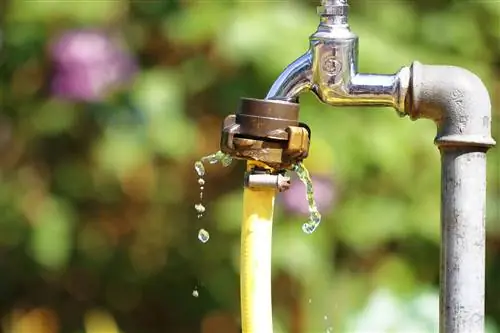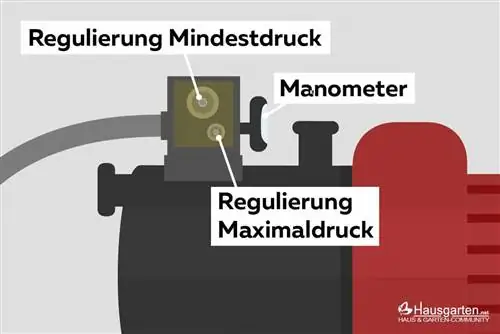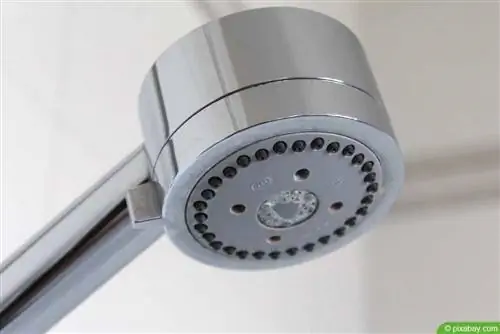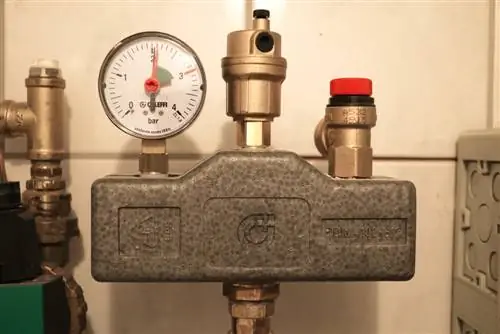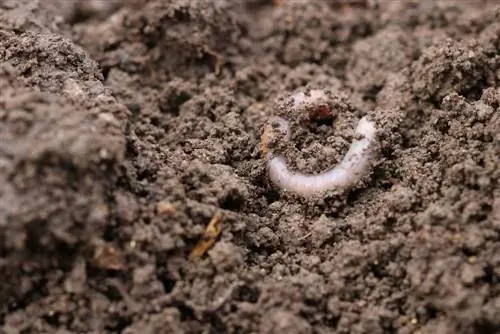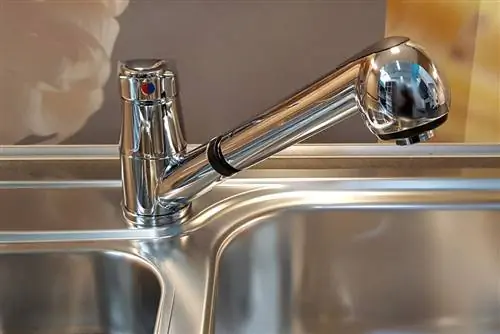- Author admin [email protected].
- Public 2023-12-17 03:39.
- Last modified 2025-01-24 12:45.
Low water pressure or a bad garden hose can cause numerous problems, from watering the lawn to filling the garden pond. This guide shows how the causes can be remedied.
Garden hose as a cause
One of the most common causes of low water pressure is the garden hose itself. Examples of problems include:
- Deposits inside
- Kinks
- knot
- Holes
- leaking connections
- Clogs at the ends
The first step if there is too little water pressure should always be to check the hose itself and the connections to the pipe.
If any damage or leaks are noticed, they can be remedied quickly and easily.
Note:
A high-quality garden hose and proper care and maintenance reduce the risk of problems at this point. The hose should therefore not be left outside in frost, bent or rolled up too much.
Hose-Nozzle
A very simple way to increase the water pressure is to attach a hose nozzle. Adjustable cleaning nozzles or multi-showers make it possible to regulate the pressure by simply turning.
This can help with hosing off stones or specifically moistening the rose petals. Multi showers in particular are ideal for this and are cheap to buy at 20 to 30 euros.
Hose diameter
The diameter of the garden hose plays a crucial role in the water pressure. A ½ inch hose has a significant pressure loss over just a few meters due to the friction and resistance that the water encounters. With a diameter of ¾ inch, resistance and friction are significantly lower. The pressure loss is therefore reduced by the size.
Measuring water pressure
You can use a water pressure gauge to check how much bar the garden hose or water pipe is outputting. In most households the pressure is a maximum of 10 bar. Normal and sufficient is 5 to 6 bar.
The pressure decreases again through the hose. If the hose diameter is ¾ inch, the loss is small. Even over a length of 50 meters it is only 0.4 bar.
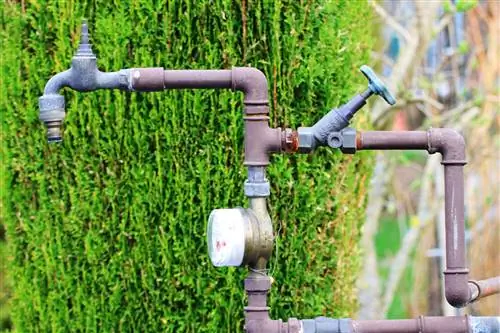
Note:
To determine a pressure loss in the garden hose, the measuring device should first be connected directly to the connection and then to the end of the hose. This way you can control the difference and also a problem on the line if the pressure is well below the limit.
Increase water pressure
How the water pressure from the garden hose can be increased also depends on the water source. If it is a barrel, a cistern or a well, a pump must be used. The performance and design of the model determine how high the pressure is. If the water comes from the tap, simply turning on the tap can be enough to adjust the pressure. Repeated rinsing at intervals can also produce an improvement.
Altitude
Depending on the altitude, the water pressure from the pipe and therefore also in the garden hose may be lower because a longer distance has to be covered. In these cases, switching on or switching on a pump makes sense and is practical. This allows the loss through distance, resistance and friction to be compensated for.
Prevent pressure reduction
There are various measures available to prevent low water pressure from the garden hose.
These include:
- Empty water pipes before the first frost
- Turn off water outside when temperatures are below zero
- Store the garden hose frost-free
- Bleeding pipes
- Check water pressure regularly
Deposits can form in the hose, especially when you have very hard water or when pumping from a barrel, well or cistern. These clog it over time and cause greater resistance due to increased friction. The same applies to the nozzle, if there is one at the end of the hose. Cleanliness must be guaranteed. Calcification of the openings causes higher pressure in the garden hose, but prevents the desired regulation.

